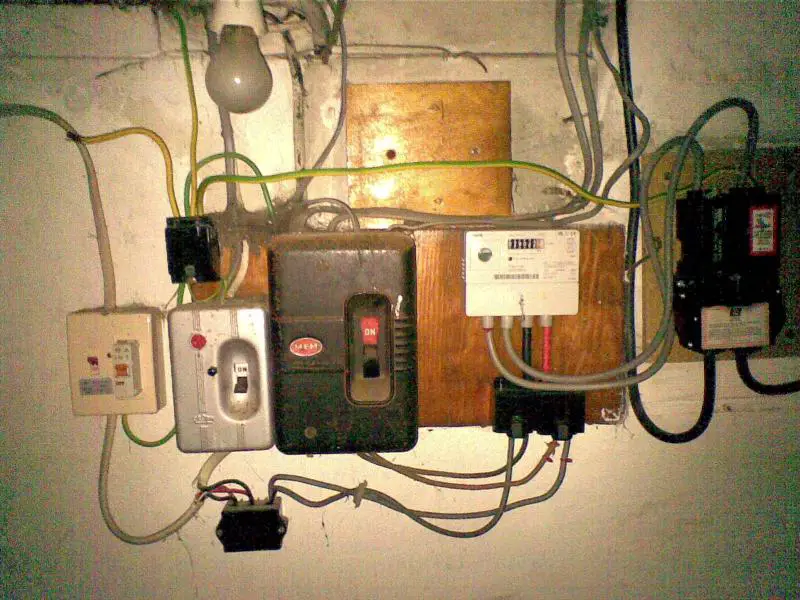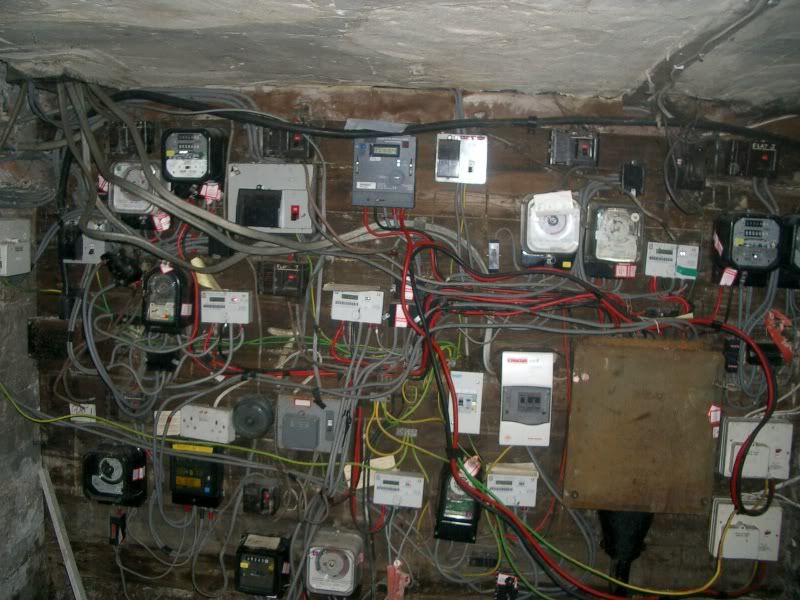Just been asked to look into doing some work in this flat.
Hey, who needs a Consumer Unit anyway…..???!!!
Perfectly normal for an old property, though room for improvement. It was done like that; if a new circuit was required another switch fuse was added - over the years more circuits like showers and cookers were gradually required.
Often today we do similar things - if for example a shower is added and there is no room in the cu or it doesn't have an rcd then it can be easier to add an extra one way board or whatever.
Perhaps someone can show him that picture of a cellar wall that is absolutely covered in switch fuses and meter tails etc...




